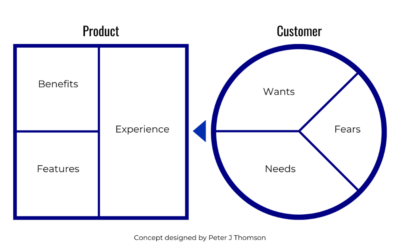Who is your ideal client?
Understanding the market you serve and your ideal client can inform all aspects of your marketing and ultimately save you time and money.
What is the smallest market your small architecture firm can survive on, and who is your ideal client?
Authentically connecting with your ideal client now will get you closer to working with your dream customers on dream projects in the future.
Here are a few simple steps to help you get started:
Step 1: Reflect on past projects
Reflect on past projects and identify the most successful ones. If you are just starting your architecture firm, identify the types of projects you want to work on and reflect on similar projects from your professional experience.
A combination of factors may define a successful project. Define what success means to you; you might include factors such as design quality, client satisfaction, sustainability, profit margins, etc.
What do the successful projects in your business have in common? Do they tend to have large or small budgets? Are they new construction or renovations? Residential, commercial, or institutional? Try to be as specific as possible.
Who were the clients for these projects? In the next step, you will learn as much as possible about them.
Step 2: Survey or study current or past clients
In the previous step, you identified your most successful and began considering the clients for those projects.
You need to learn everything you can about these clients. They will serve as the basis for defining your ideal customer persona(s).
Consider surveying these clients or, even better, talking to them in person. Ask them open-ended questions like what drew them to your firm, what would improve the experience, and what problems they have.
Their insights can be invaluable if you take the time to listen.
Post-occupancy evaluations can be another valuable tool. According to the 2020 AIA Firm Survey Report, just 14% of firms reported that they conducted post-occupancy evaluations (POEs) in the previous year.
Post-occupancy evaluations allow you to learn about your customers and adjust your products and services to meet their needs.
Next, you will use the information you have gathered to develop your ideal client persona(s).
Step 3: Create your ideal client persona
A persona is a fictional representation of your ideal client informed by the data collected from your existing customers and market research. You can make it complicated, but it doesn’t have to be.
All you need to begin is somewhere to write. Based on your research and reflection, describe your ideal client, considering factors like demographics, values, and goals.
Below are a few example questions.
Demographic Information:
- What is their age range? Where are they located?
- What is their educational background?
- What is their job title or role within their organization?
Behavioral and Psychographic Insights:
- What are their values and beliefs related to design?
- How do they make decisions when hiring architectural services?
- What are their interests and hobbies?
Goals and Challenges:
- What specific goals are they aiming to achieve by hiring you?
- What are the biggest challenges they encounter?
- How do they measure success for a project?
Current Interactions and Sources of Information:
- Where do they seek information from?
- Which social media platforms or publications do they follow?
- Are they part of any professional associations or networks?
Step 4: Continuously refine
Once you have captured information describing your ideal client, you can organize the data to inform and inspire your marketing strategy.
Your customer persona will continuously evolve. As you work on new projects, continue adding to your definition.
Whatever you do, don’t try to be everything to everyone. Most people see through this, and you will waste precious resources going after clients and projects that are not the right fit for you and vice versa.
TL;DR (Too long; didn’t read)
Defining and understanding your ideal client will help you connect with and build trust with your target market before ever submitting a proposal. Here are a few simple ways to get started:
- Reflect on past projects
- Survey or study current or past clients
- Create your ideal client persona(s)
- Continuously refine
Having an image of your client personas at the top of your mind can help keep your marketing efforts focused on your target market. Artificial intelligence tools, like Midjourney, are a fun way to explore visuals to inspire you.
To demonstrate, I created a few visual avatar examples for myself.
Prompt: An illustration of a small architecture firm owner passionate about providing quality design service to clients and continuously learning how they can improve their design practice.





0 Comments